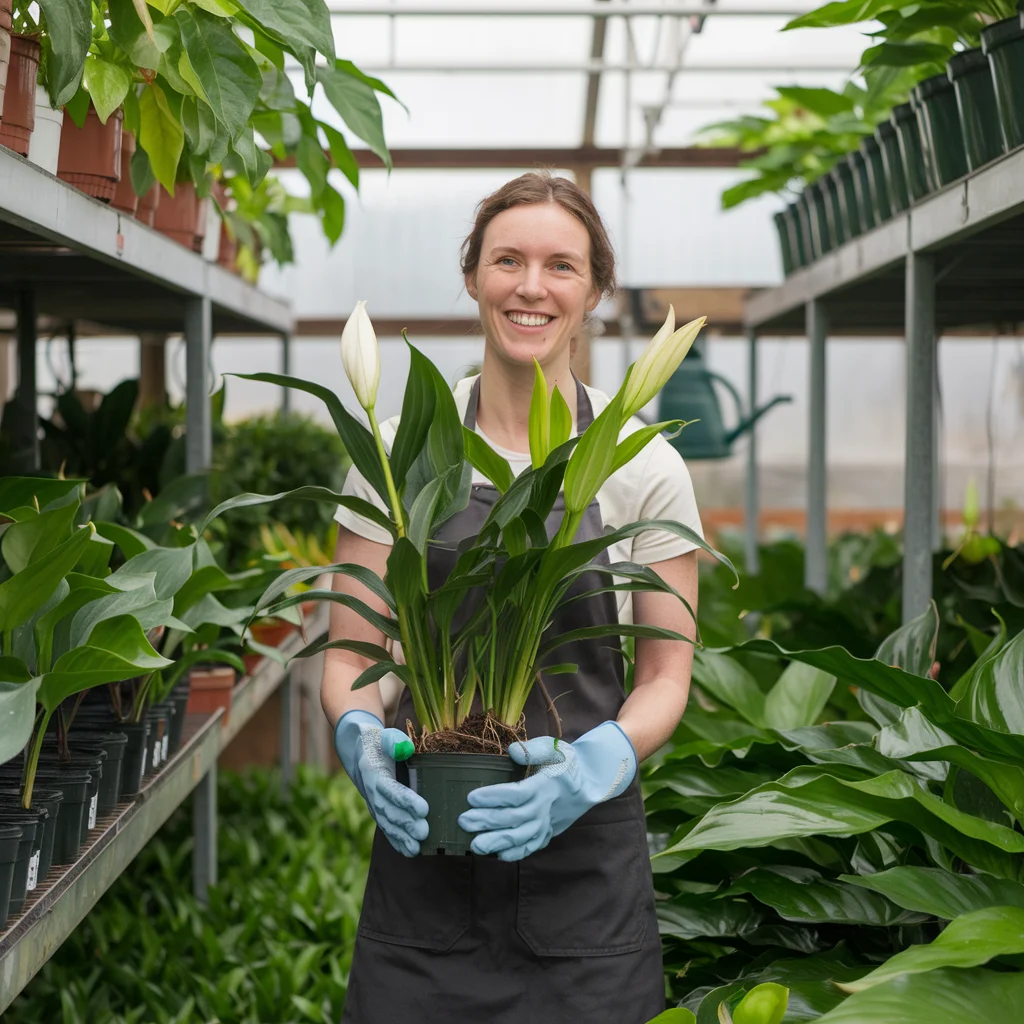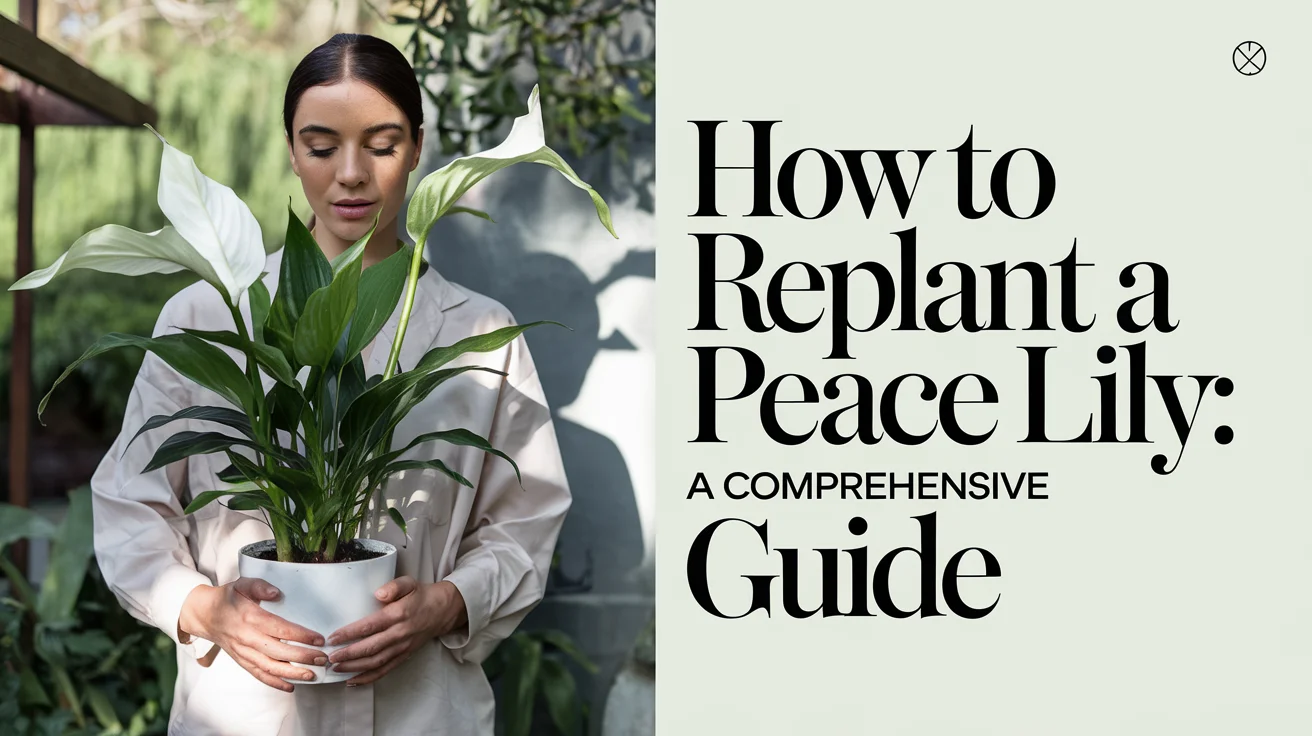Transplanting peace lily is an obligation for every owner of the plant; as such, it’s expected that you understand how to do it. If your plant has outgrown its pot or you simply want to change the soil, then knowing how to replant a peace lily will enable you maintain its health and lively look. This guide “How to Replant a Peace Lily ” will help in rehearsing the steps involved when successfully transplanting your peace lily in order to carry on living very well in its new environment.
Additionally, the soil can become compacted and depleted of nutrients over time in potted plants. In this case, there would be need for repotting so as to replace the old soil with fresh rich one that will promote health life of your peace lily.
When Should You Replant a Peace Lily?
Timing is critical when transplanting a peace lily. The ideal time for transplantation is during spring or early summer when it is at its growth phase. Transplanting during this period allows them heal faster due to the advantage they take from space and nutrients from newly introduced soils.
Some signs that indicate you should consider repotting your peace lily include:

The roots are visible on the surface of the soil or poking out of the drainage holes.
Despite regular watering, the plant appears wilted or cannot retain moisture.
The soil has become packed down or hardened preventing water penetration.
If any of these symptoms are observable it means they must be transplanted again.
How To Replant A Peace Lily
Step 1: Gather your supplies
To repot a peace lily, here are some materials you need;
Select a new pot that has 1-2 inches bigger diameter than current one which also A new pothave drainage holes stopping water from pooling at bottom leading to root rot problem. Fresh potting soil: For planting peace lilies choose well-drained potting mix. You could either get a general houseplant potting mix or make one by mixing equal volumes of peat moss, perlite, and pine bark. A trowel or small shovel: As such, this will make it easier for the plant to be removed from its present pot and placed into new ones.
Step 2: Prepping The New Pot
Before you remove your peace lily from its current pot, add fresh potting soil to the bottom of the new container. This layer should be deep enough that roots can comfortably sit on top without it being too close to the bottom. This is done in order to prevent water from collecting around the roots which causes root rot.
Step 3: Peace Lily Extraction from the Current Pot
Further, in order to take the peace lily out of its current pot, gently seize the bottom of the plant close to the soil and pull it out carefully. If it is trapped inside, you can either tap lightly at the sides of the pot or use a trowel to make the soil along its edges loose. Do not damage roots during this process.
Step 4: Examine and Prune Roots
After taking off from container, examine roots for any brown, mushy or rotting ones then trim them off with clean pair of scissors if possible. White and firm roots indicate healthy condition. Also when potted with too many roots; one may want to tease apart these gently so that they spread out into a new container.
Step 5: The Placement of Peace Lily in New Pot
When planting peace lily, position it at center of new pot ensuring that top root ball is about an inch below rim. Begin filling fresh potting soil around root system pressing softly to take away air spaces. Avoid deep burying; lower stems should be slightly above line of soil.
Step 6: Watering Plant Thoroughly
Ensure that after replanting, peace lily has been watered efficiently until water passes through out beneath pregnancy pots. This assists in settling down earth round about its root systems and ensures there is enough moisture in it for recovery post transplantation. Let water drain completely avoiding standing water in which case plant sits.
Step 7: Post Replanting Care
Alternatively keep your newly replanted peace lily somewhere with bright indirect light. It must not be exposed directly eye on sunlight since this would burn its leaves up. You must continue watering regularly but be cautious as over-watering is not good at all. Once you start noticing some initial wilting or drooping don’t panic because peace lily may need some time to accommodate in a new pot. Finally, the plant will thrive with proper care.
Conclusion
Replanting is an important practice of keeping peace lily healthy and vibrant. With these steps, one can ensure their peace lily has ample room and good nutrition for strong and beautiful growth. This could be as a result of being root-bound or just changing the soil, therefore knowing how to replant a peace lily correctly can keep your plant flourishing through numerous years ahead .





